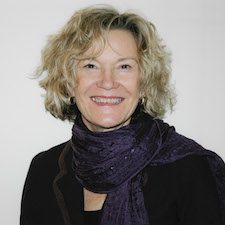Carol Frost’s latest collection, Entwined: Three Lyric Sequences, was written over a twenty-five year period. The poems in this book are daring and intimate in their language and subject matter, and brimming with truths about the human experience and how we navigate through the world.
I was first introduced to Carol Frost’s poetry via her book I Will Say Beauty when I read it for my undergraduate poetry capstone. I remember being amazed at how adept she was at describing nature imagery and how she wasn’t afraid to bend the rules of what a poem should and shouldn’t do. Entwined is no different. Frost experiments with punctuation, uses the word ‘beauty’ in numerous poems, and she took on the task of writing a series of poems for more than two decades. I don’t know how many poets can say they’ve done that. Then again, Frost isn’t someone who shies away from taking risks.
In “Scorn,” she describes a woman feeding her husband starling eggs for breakfast, and her past and present ‘sometimes’ hatred for him:
How had they not been wounded? And wounded they’d convalesced in the same rooms
and bed. When at last they knew everything without confiding—fears, stinks,
boiling hearts—they gave up themselves a little so that they might both love and scorn
each other, and they ate from each other’s hands.
Frost likes to work in the above spaces; the spaces between love and contempt, or light and darkness, to name two. She knows life, and certainly poetry, are full of contradictions. A married couple cannot love without hate—these things go hand in hand, they fuel one another.
“Scorn” appears in the second lyric sequence entitled “Abstractions.” This section discusses general abstractions like art, the imagination, and joy. Frost utilizes a few different pronouns such as ‘you,’ ‘she’ and ‘he’ to tell narratives about each abstraction and to make them new again for the reader through storytelling.
art, the imagination, and joy. Frost utilizes a few different pronouns such as ‘you,’ ‘she’ and ‘he’ to tell narratives about each abstraction and to make them new again for the reader through storytelling.
The first sequence, “Voyage to Blackpoint,” follows the speaker on their journey. Light and darkness play a role in the imagery from “the last moon gulf Hades dark: / at 3 a.m.” in the poem “Boat” to the “light that makes you feel day will never end::” in “Voyage.” Many of the titles in this section concern objects, animals, and places. The speaker recreates how the world and these things are seen and experienced by the reader. Frost is fashioning new realities for us as we take this ‘voyage’ with the speaker.
In “Manatee” I felt I was in the boat alongside the speaker as they describe the sea creature in the opening lines:
Shading to pink on the underparts: soft and liable
to be mistaken for Sirens: how sea sound comes
along the shore:: alone I found one shark-bitten deep
in the pelvic muscle floating near a shoal: water almost calm
Frost brings another layer to the manatee the speaker is seeing by comparing it to a Siren. Suddenly, it is transformed into a mythological creature, something wondrous but also potentially dangerous. The speaker even finds it near a sandbar much like how Sirens appear on rocky shores.
There are 32 numbered poems in the final sequence “Apiary Poems.” Each one deals with an aspect of the speaker’s mother’s dementia, an apiary, or both. It is much more personal than the previous two. Interwoven throughout the poems are images of bees, honey, the hive, and bee boxes. With these images, Frost sets up a parallel between the natural world and the human world; much like she does in the first sequence and at various points in the second one.
In poem 22 “Why are we here…,” the speaker’s mother mistakes a house for an ocean and demonstrates for the reader this blurring of the natural and human world:
Why are we here, who owns this house
she asks: The dark place she thinks is
an ocean at 3 a.m.: no stars or moon:
All three of these sequences are connected by their willingness and want to explain the human experience in relation to the natural world. Animals are examined and made new again through the language in “Voyage to Black Point,” bees help the speaker in “Apiary Poems” to navigate through their relationship with their mother that has been forever changed by illness and “Abstractions” uses wonderful objects like starling eggs to tell the story of a husband and wife.
“back to rain, / to the first drop crashing.” (14 “If her falling to quiet…”)
At first, I assumed the numbered poems in this sequence were in chronological order but when I reached poem number 13 I realized they were jumping back and forth in time. Through this form, a reexamination of memory and the passage of time takes place for the reader and for the speaker.




